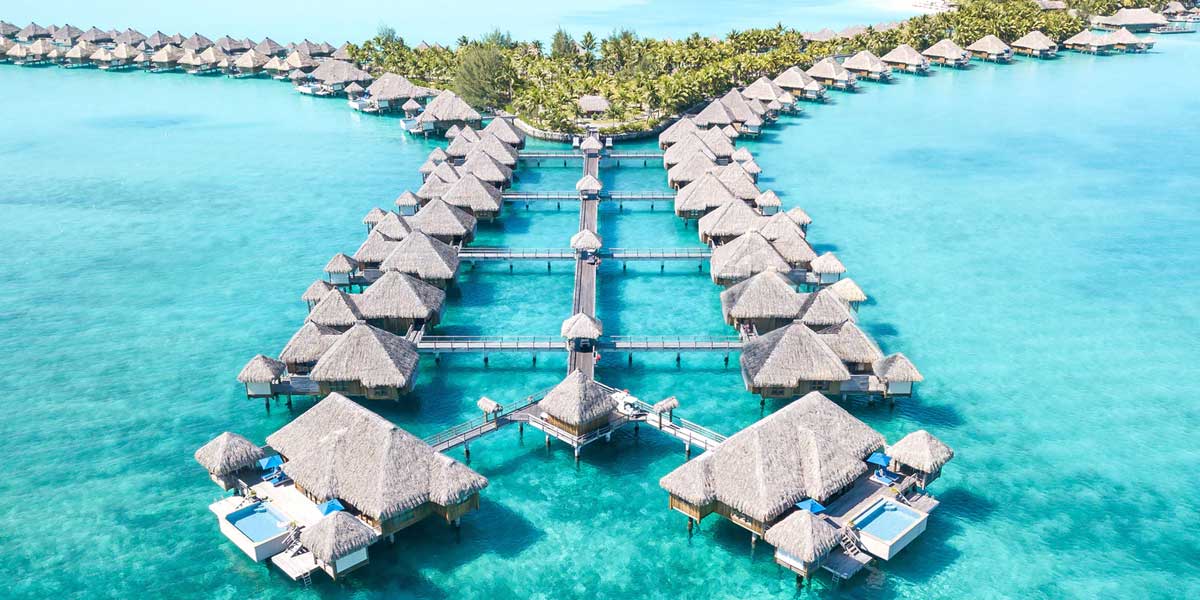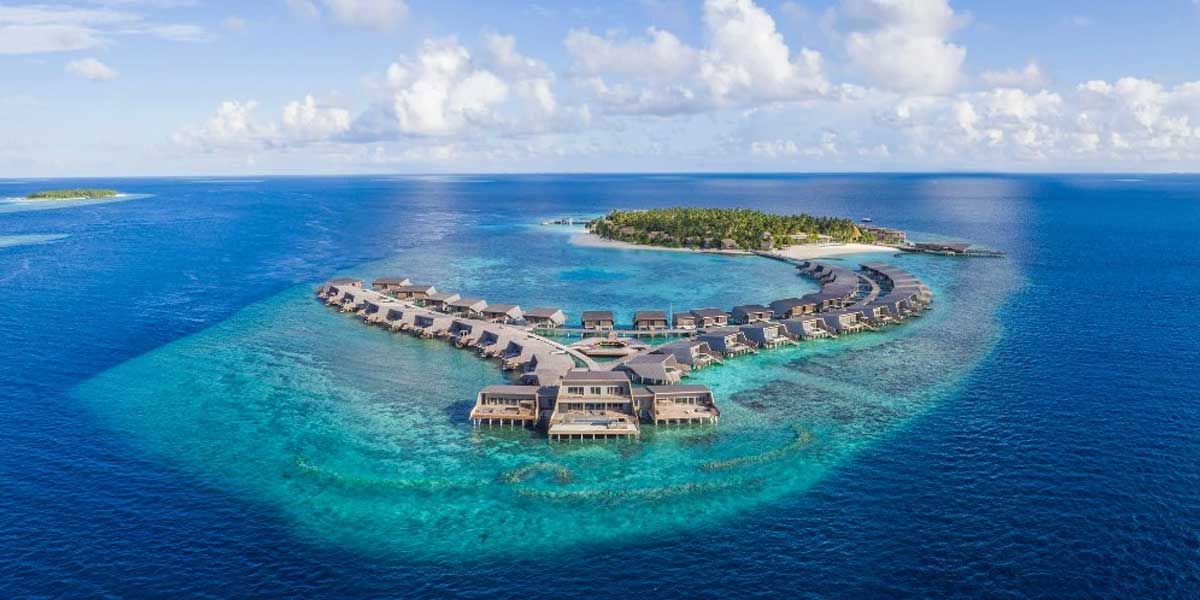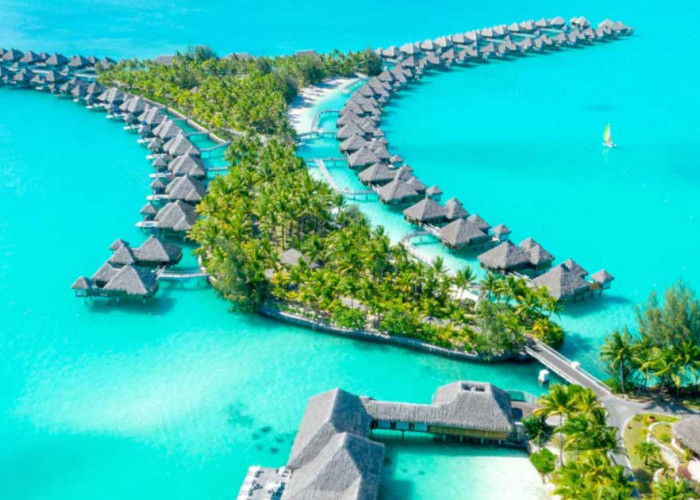The Most Beautiful Tourist Spots in The World

Bora Bora is one of the most beautiful tourist spots in the world--cache.marriott.com
BELITONGEKSPRES.CO.ID - Tourist spots refer to popular destinations or attractions that draw a significant number of visitors. These spots can vary in nature and may include historical sites, natural wonders, cultural landmarks, amusement parks, museums, beaches, and more.
Tourist spots often have unique features, significant historical or cultural importance, stunning natural beauty, or offer exciting experiences that make them appealing to travelers.
They are usually well-developed with infrastructure and facilities to accommodate tourists, such as accommodations, restaurants, transportation, and guided tours.
Beauty is subjective, and what one person finds beautiful may differ from another's perspective. However, there are several locations around the world that are widely regarded as exceptionally beautiful. Here are some of them:

Maldives is one of the Most Beautiful Tourist Places in the World--robbreport.com
1. The Maldives
The Maldives is a tropical paradise located in the Indian Ocean, southwest of Sri Lanka. Known for its stunning natural beauty, crystal-clear turquoise waters, and luxurious resorts, the Maldives is a dream destination for many travelers. Here's some information about this breathtaking archipelago:
- White Sandy Beaches: The Maldives is renowned for its pristine white sandy beaches that stretch for miles. The soft powdery sand and turquoise waters create a postcard-perfect setting.
- Coral Reefs and Marine Life: The Maldives is home to some of the world's most beautiful coral reefs, teeming with vibrant marine life. Snorkeling and diving enthusiasts can explore the stunning underwater world, spotting colorful coral formations, tropical fish, sea turtles, and even majestic manta rays and whale sharks.
- Overwater Bungalows: The Maldives is famous for its luxurious overwater bungalows. These private villas built on stilts allow guests to immerse themselves in the tranquility of the ocean and enjoy direct access to the crystal-clear lagoon.
- Pristine Atolls: The Maldives comprises 26 coral atolls, each consisting of multiple islands. The atolls are surrounded by shallow lagoons and protected by vibrant coral reefs, creating a breathtaking and idyllic setting.
- Sunset and Sunrise Views: The Maldives offers stunning views of sunsets and sunrises over the Indian Ocean. The vibrant hues of orange, pink, and purple paint the sky, providing a romantic and magical experience.
- Water Sports and Activities: Besides snorkeling and diving, visitors to the Maldives can enjoy a range of water sports and activities, including kayaking, stand-up paddleboarding, jet skiing, and sailing. The calm and clear waters provide the perfect playground for adventure and relaxation.
- Underwater Restaurants: The Maldives is home to unique underwater restaurants where you can dine while surrounded by the marine life and coral reefs. It offers a truly unforgettable dining experience.
- Private Island Escapes: Many resorts in the Maldives occupy their private islands, providing a secluded and exclusive experience for guests. These resorts offer luxurious amenities, personalized service, and breathtaking views of the surrounding natural beauty.
- Local Culture and Island Life: While the Maldives is often associated with luxurious resorts, visitors can also explore the local culture and experience the daily life of the Maldivian people. Local island visits offer a glimpse into the traditional lifestyle, colorful markets, and warm hospitality.
- Relaxation and Wellness: The Maldives is a destination that encourages relaxation and wellness. Many resorts offer world-class spas, yoga retreats, and wellness programs, allowing visitors to unwind and rejuvenate in a serene tropical environment.
The Maldives is a true tropical paradise that captivates travelers with its natural beauty, pristine beaches, and abundant marine life. It offers an opportunity to escape from the hustle and bustle of everyday life and immerse oneself in the tranquility and luxury of this idyllic destination.
2. Santorini
Santorini is a picturesque Greek island located in the Aegean Sea. Known for its stunning landscapes, iconic blue-domed churches, and breathtaking sunsets, Santorini is often regarded as one of the most beautiful destinations in the world. Here's some information about this enchanting island:
- Caldera Views: Santorini is famous for its unique geographical features, including its caldera. The island is essentially a volcanic crater, and the towns of Fira, Oia, and Imerovigli are perched on the cliffs, offering magnificent views of the deep blue sea, whitewashed buildings, and volcanic cliffs.
- Whitewashed Villages: Santorini's architecture is characterized by its traditional whitewashed houses, blue-domed churches, and narrow winding streets. The contrast of the vibrant blue skies against the white buildings creates a visually stunning and idyllic scene.
- Oia: The village of Oia is particularly renowned for its postcard-perfect beauty. With its charming houses, narrow alleys, and blue-domed churches, Oia provides some of the most iconic and breathtaking views on the island.
- Santorini Sunsets: Santorini is renowned for its mesmerizing sunsets, and Oia is a popular spot to witness this magical event. As the sun sets over the caldera, the sky is painted in hues of orange, pink, and purple, creating a truly unforgettable and romantic atmosphere.
- Volcanic Beaches: Santorini is home to unique beaches with volcanic origins. The most famous ones include the Red Beach, characterized by its red cliffs and sand, and the Black Beaches of Perissa and Kamari, known for their black volcanic sand.
- Santorini Wineries: The island boasts a thriving wine industry, and visitors can explore the vineyards and wineries that produce the famous Santorini wines. The volcanic soil and unique grape varieties contribute to the distinct flavors of the local wines.
- Ancient Ruins: Santorini has a rich historical background, and visitors can explore the ancient ruins of Akrotiri, a Minoan Bronze Age settlement buried under volcanic ash. The ruins offer insights into the island's past and provide a fascinating glimpse into ancient civilization.
- Boat Tours and Excursions: Exploring Santorini by boat is a popular activity. Visitors can take boat tours around the island, visit nearby islets, or even take a dip in the therapeutic hot springs created by the volcanic activity.
- Local Cuisine: Santorini offers a delightful culinary experience with its traditional Greek cuisine. Visitors can savor local specialties such as fresh seafood, Greek salads, fava beans, and the famous Santorini cherry tomatoes.
- Sun-Kissed Beach Life: Santorini's beaches, although unique in their volcanic nature, offer a great place to relax, soak up the sun, and enjoy the sparkling Aegean Sea. Whether it's swimming, sunbathing, or water sports, the island provides ample opportunities for beach lovers.
Santorini's captivating beauty, stunning landscapes, and unique architecture make it an extraordinary destination that enchants visitors from around the world.
Its romantic ambiance, breathtaking views, and rich cultural heritage combine to create an unforgettable experience for travelers seeking both natural beauty and cultural exploration.
Cek Berita dan Artikel lainnya di Google News
Temukan Berita Terkini kami di WhatsApp Channel
Sumber:








